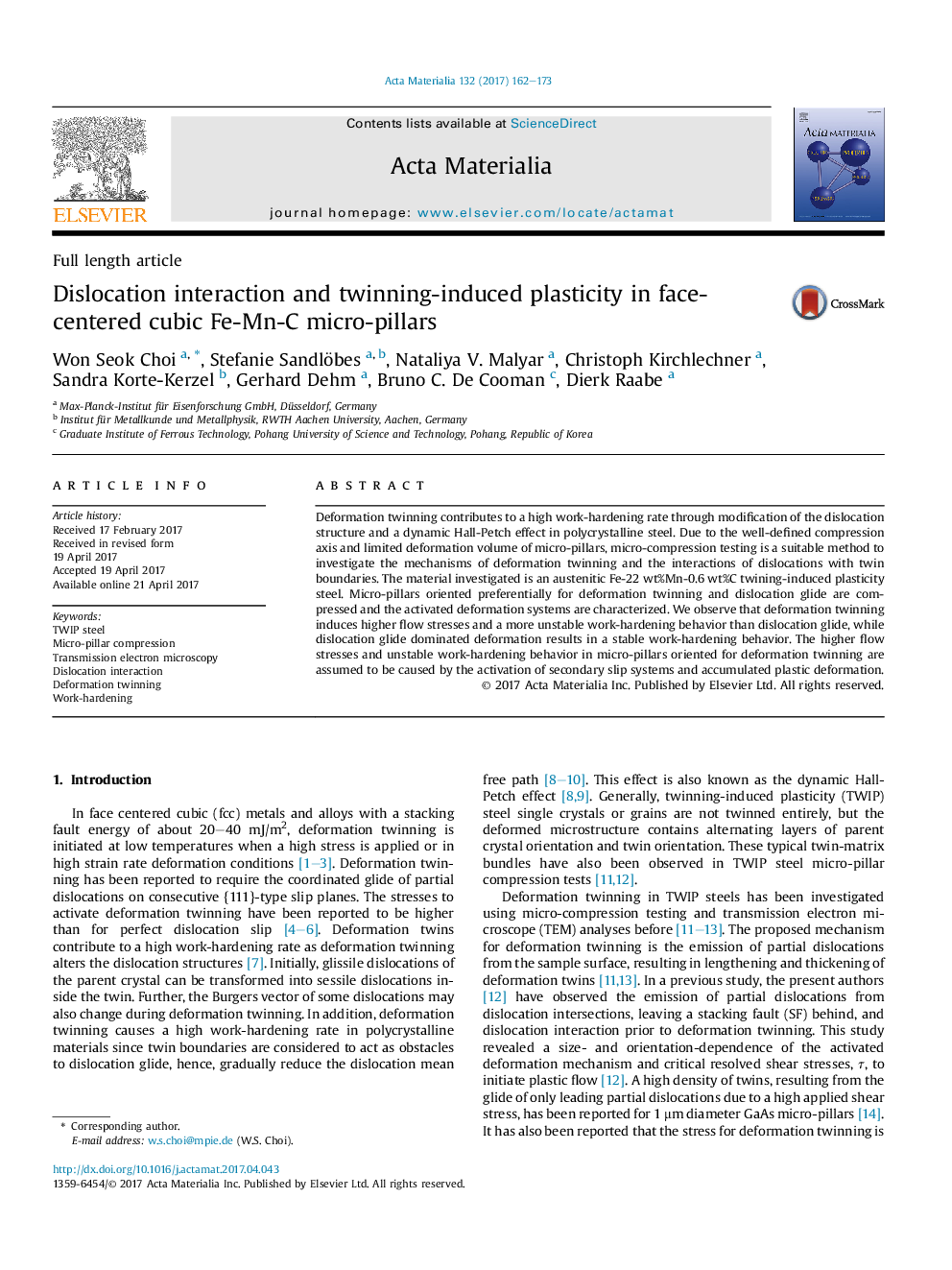| Article ID | Journal | Published Year | Pages | File Type |
|---|---|---|---|---|
| 5436153 | Acta Materialia | 2017 | 12 Pages |
Deformation twinning contributes to a high work-hardening rate through modification of the dislocation structure and a dynamic Hall-Petch effect in polycrystalline steel. Due to the well-defined compression axis and limited deformation volume of micro-pillars, micro-compression testing is a suitable method to investigate the mechanisms of deformation twinning and the interactions of dislocations with twin boundaries. The material investigated is an austenitic Fe-22Â wt%Mn-0.6Â wt%C twining-induced plasticity steel. Micro-pillars oriented preferentially for deformation twinning and dislocation glide are compressed and the activated deformation systems are characterized. We observe that deformation twinning induces higher flow stresses and a more unstable work-hardening behavior than dislocation glide, while dislocation glide dominated deformation results in a stable work-hardening behavior. The higher flow stresses and unstable work-hardening behavior in micro-pillars oriented for deformation twinning are assumed to be caused by the activation of secondary slip systems and accumulated plastic deformation.
Graphical abstractDownload high-res image (211KB)Download full-size image
